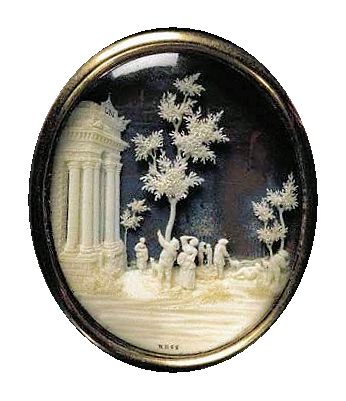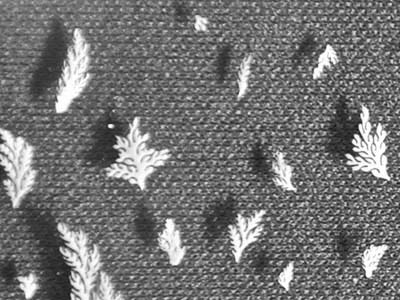A little wonder
This delicate relief is a tour-de-force of virtuoso ivory carving on a microscopic scale. The technique, known as micro-carving, was popular in the late eighteenth century. This carving, set to a later high carat gold ring, is signed Hess and most likely, due its subject and composition, it is by Paul Johann Hess. The micro-ivory artists, brothers Sebastian and Paul Johann Hess, were active in Brussels and settled in Vienna around 1780. Because of their miniature ivory sculptures, carved with inexplicable mastery, set on a blue background and covered with rock crystal glass, these two engravers [as they modestly called themselves] have become legendary figures in the history of micro-carving and created pieces for royalty and nobility. This micro-carving is set on a ground of pulverised royal blue cobalt. The subject matter is typical of Paul’s work with the depiction of a classical facade and the life-like shape of his trees, which are even more intricate than his brother’s. The figures who are cherry picking are clearly defined yet less than a quarter of an inch tall. How Hess managed to carve the branches of the trees is absolutely inexplicable. The problem was not only the cutting and filing of the piece of ivory, it was also the extremely difficult task of stabilising it to prevent it from breaking whilst being worked on. This is a dazzling example of micro-carving artistry, unable ever to be replicated. The ring is size O [US 7] and the head of ring measures 3/4 of an inch by 2/3 of an inch.
sold






Another landscape with classical facade by Paul Johann Hess below

the microscopic elements of a micro-ivory carving below

